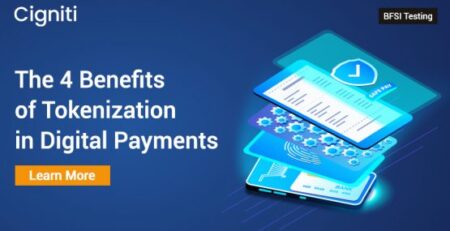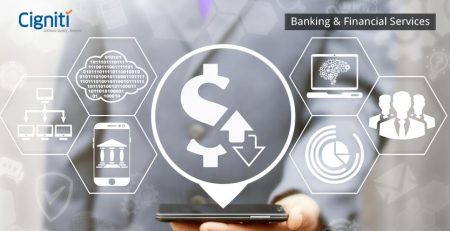What is required to modernize legacy core banking platforms?
A recent report by the UK’s Financial Conduct Authority (FCA) says, “Around 50% of the banks do not upgrade legacy core banking platforms as soon as they should, and 43% of US banks still use COBOL, a programming language dating from 1959.”
While majority of the COBOL programmers are enjoying a happy retirement, it is obviously a tough choice to find one.
The need to modernize legacy core banking platforms has been augmented by the mounting shortage of the age-old technology talent pool, which makes it extremely expensive and difficult for banks to maintain and operate their existing legacy core banking systems.
It is also evident that the modern-day customers expect banks to provide breakthrough features and services they usually receive from companies, who are on the leading edge of digital innovation.
According to a 2019 survey conducted by Censuswide, “43% of the people expect to open an account instantly, but only 37% of traditional banks offer this service.”
The digital innovations continue to disrupt the marketplace, leaving legacy core banking platforms decades behind. The customer experience, quality at high-speed, and experience assurance hold the key for next-gen banking services.
Today’s core banking platforms typically fall under the following categories –
- Legacy platforms – They run on a closed platform, more often a mainframe system that usually comes with a multi-year, license-based pricing model. Since these platforms are decades old, they are highly complex to implement in today’s digital transformation milieu.
- Service-oriented platforms – These platforms enable real-time processing and are designed around a service-oriented architecture (SOA) model. They feature a license and subscription-based model and are usually offered as hosted software-as-a-service (SaaS) solutions.
- Cloud Native platforms – The Cloud native platforms leverage micro services-based architecture with application programming interfaces (APIs) that provide access to and from other internal and external services. As they are Cloud Native, they typically offer a pay-per-use subscription model and support real-time processing.
Determining the best platform for your bank
To determine the best platform for your business, there is a need to establish a modernization profile based on the –
- Sustainability of the existing platform
- Need to innovate any of your service offerings
- Complexity of your data profile
- Urgency to transform based on any critical considerations
- Dire need to upgrade your existing products to meet current trends and
- Appetite for risk
According to a recent McKinsey survey, “Not surprisingly, incumbent banks are increasingly concerned about the limitations of their own core architectures and their relatively slow pace of change. As a result, some 70% of banks are reviewing their core banking platforms.”
Cloud-native core banking platforms and their differentiators
Fortunately for these incumbent banks, tools are at hand to overcome these limitations. A new generation of cloud-native core banking platforms such as FinXact, Mambu, Thought Machine, and 10X promise the banks to meet their challenges.
The differentiators enabled by these cloud-native and other traditional core platform vendors are as follows –
- Cloud-native architecture, resulting in experience assurance, quality at speed, automation, and low cost
- APIs and microservices to enable reusability and faster integration
- Real-time data analytics for digital transformation, enabled by a single source of truth for customer and transaction data
- Enabling ultra-personalization, faster time to market, through hyper-parameterized product ranges
- Leveraging best of breed solutions through 3rd party ecosystems, to ease digital transformation
Innovative digital features and capabilities can be offered by banks through the modernization of their core system.
Benefits of modernizing legacy core banking platforms
The modernization of legacy core banking platforms harnesses a wide range of potential benefits such as –
- Enabling data insights and cognitive automation that can create innumerable opportunities to serve clients
- Driving performance, growth, and compliance by improving business process cycle time and eventually creating business value
- Supporting product innovation, customer satisfaction, and improved service levels
- Creating a new technology hub for talented professionals and reducing the scarce of legacy programmers
- Enabling strategic flexibility and scalability through cloud-based solutions
To capture these host of benefits, it is imperative that your data governance framework is strongly aligned with a wider IT Governance framework.
As put forth by Luis Moreira-Matias, the head of Data Science at Kreditech, “The key factor for banks to increase customer lifetime value is by personalization or the ability to make the right offer at the right time – either to grab a customer or to make a profit out of them. Such personalization is only possible with data analytics and data science.”
Thanks to cloud technologies, in 2020, the financial data can reside anywhere. Yet, it remains stranded or uncollected in the legacy systems, for the lack of ability to do so in real-time. Due to this, the legacy core banking platforms cannot compete with the digital players in the aspects of innovative analytics driven solutions and cannot experiment with machine learning, artificial intelligence (AI), and predictive analysis.
There is no doubt that the legacy core banking platforms that take the right approach to modernization will reap valuable benefits on their journey towards digital transformation. They will eventually see improved productivity, reduced total cost of ownership, and digital innovation.
Another McKinsey survey reveals – “In terms of budget, the majority have earmarked $10 million or more over the coming year (sufficient for experimentation), with around 20% planning to invest $20 to $40 million.”
When you factor in the operational, performance, and ultimately revenue gains, you will realize that modernizing legacy systems isn’t too costly. Rather, it might prove expensive, if delayed further!
Through Cigniti’s extensive experience of helping banks modernize their legacy core platforms, we have identified several key practices that can amplify your success ratio.
- Carefully choose a modernization approach that minimizes disruption to your business
- Expedite your mainframe-to-cloud migration and extraction of business rules by leveraging APIs and latest digital tools
- Simultaneously improve your business processes while modernizing your technologies and legacy core banking platforms.
- Implement a creative funding model, mostly self-funding, and don’t wait until the alarm bells ring
- Not just purchase price, focus on the total cost of ownership (TCO). With the right approach, it is possible to minimize costs early in the modernization process.
Our proven quality-at-speed will be an integral step in your journey of digital transformation. Our dedicated banking Domain Competency Group (DCG) strengthens our thought leadership in the banking’s functional and technology landscape.
We have a proven track record of supporting the IT operations & annual transactions of over $80 billion for large banks in US using our customized QA Framework support. Our Test Automation Framework (CTAF), a tool-agnostic platform, can be used across multiple banking applications and mobile devices with minimal rework, thus reducing manual effort by more than 50%.
Using Cigniti’s expertise in automation and test centres of excellence, you can:
- Reduce more than 50% operational costs by automating core banking functions with AI–based solutions
- Achieve continuous testing and end-to-end validation for digitalization of your core banking systems
- Achieve Experience Assurance, while transforming your backend operations and modernizing core legacy technologies
Without a better core platform, you will not be able to bank on bigger innovations such as enhanced red-carpet security layer, 360-degree fraud detection, next-gen AI/ML powered decision analytics engines, and innovative credit card scoring models.
Contact us to determine the best candidates for modernization of your legacy core banking platforms.





Leave a Reply